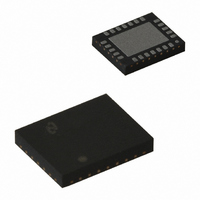LP3943ISQ/NOPB National Semiconductor, LP3943ISQ/NOPB Datasheet - Page 6

LP3943ISQ/NOPB
Manufacturer Part Number
LP3943ISQ/NOPB
Description
IC LED DRIVER RGB 24-LLP
Manufacturer
National Semiconductor
Series
PowerWise®r
Type
RGB LED Driverr
Datasheet
1.LP3943ISQNOPB.pdf
(13 pages)
Specifications of LP3943ISQ/NOPB
Topology
PWM, Step-Up (Boost)
Number Of Outputs
16
Internal Driver
Yes
Type - Primary
LED Blinker, Light Management Unit (LMU)
Type - Secondary
RGB, White LED
Frequency
400kHz
Voltage - Supply
2.3 V ~ 5.5 V
Mounting Type
Surface Mount
Package / Case
24-LLP
Operating Temperature
-40°C ~ 85°C
Current - Output / Channel
25mA
Internal Switch(s)
Yes
For Use With
LP3943ISQEV - BOARD EVAL FOR LP3943 FUNLIGHT
Lead Free Status / RoHS Status
Lead free / RoHS Compliant
Voltage - Output
-
Efficiency
-
Other names
LP3943ISQ
LP3943ISQTR
LP3943ISQTR
Available stocks
Company
Part Number
Manufacturer
Quantity
Price
Company:
Part Number:
LP3943ISQ/NOPB
Manufacturer:
TI
Quantity:
8 102
Part Number:
LP3943ISQ/NOPB
Manufacturer:
TI/德州仪器
Quantity:
20 000
www.national.com
Application Notes
THEORY OF OPERATION
The LP3943 takes incoming data from the baseband con-
troller and feeds them into several registers that control the
frequency and the duty cycle of the LEDs. Two prescaler
registers and two PWM registers provide two individual rates
to dim or blink the LEDs (for more information on these
registers, refer to Table 1. LP3943 REGISTER TABLE).
Each LED can be programmed in one of four states — on,
off, DIM0 rate or DIM1 rate. Two read-only registers provide
status on all 16 LEDs. The LP3943 can be used to drive
RGB LEDs and/or single-color LEDs to create a colorful,
entertaining, and informative setting. Alternatively, it can also
drive RGB LED as a flashlight. This is particularly suitable for
accessory functions in cellular phones and toys. Any LED
I
START and STOP bits classify the beginning and the end of
the I
transitioning from HIGH to LOW while SCL line is HIGH.
STOP condition is defined as the SDA transitioning from
LOW to HIGH while SCL is HIGH. The I
TRANSFERRING DATA
Every byte put on the SDA line must be eight bits long with
the most significant bit (MSB) being transferred first. The
number of bytes that can be transmitted per transfer is
unrestricted. Each byte of data has to be followed by an
acknowledge bit. The acknowledge related clock pulse is
generated by the master. The transmitter releases the SDA
line (HIGH) during the acknowledge clock pulse. The re-
ceiver must pull down the SDA line during the 9th clock
pulse, signifying an acknowledge. A receiver which has been
addressed must generate an acknowledge after each byte
has been received.
2
C START AND STOP CONDITIONS
2
C session. START condition is defined as SDA signal
FIGURE 2. I
2
C master always
FIGURE 1. I
2
C START and STOP Conditions
2
C Data Validity
6
pins not used to drive LED can be used for General Purpose
Parallel Input/Output (GPIO) expansion.
The LP3943 is equipped with Power-On Reset that holds the
chip in a reset state until V
Once V
initializes itself to the default state.
To bring the LP3943 into reset, hold the RST pin LOW for a
period of TW. This will put the chip into its default state. The
LP3943 can only be programmed after RST signal is HIGH
again.
I
The data on SDA line must be stable during the HIGH period
of the clock signal (SCL). In other words, state of the data
line can only be changed when CLK is LOW.
generates START and STOP bits. The I
to be busy after START condition and free after STOP con-
dition. During data transmission, I
repeated START conditions. First START and repeated
START conditions are equivalent, function-wise.
After the START condition, a chip address is sent by the I
master. This address is seven bits long followed by an eighth
bit which is a data direction bit (R/W). The LP3943 hardwires
bits 7 to 4 and leaves bits 3 to 1 selectable, as shown in
Figure 3. For the eighth bit, a “0” indicates a WRITE and a
“1” indicates a READ. The LP3943 supports only a WRITE
during chip addressing. The second byte selects the register
to which the data will be written. The third byte contains data
to write to the selected register.
2
C DATA VALIDITY
POR
is achieved, the LP3943 comes out of reset and
20079606
20079607
DD
reaches V
2
C master can generate
POR
2
C bus is considered
during power up.
2
C












